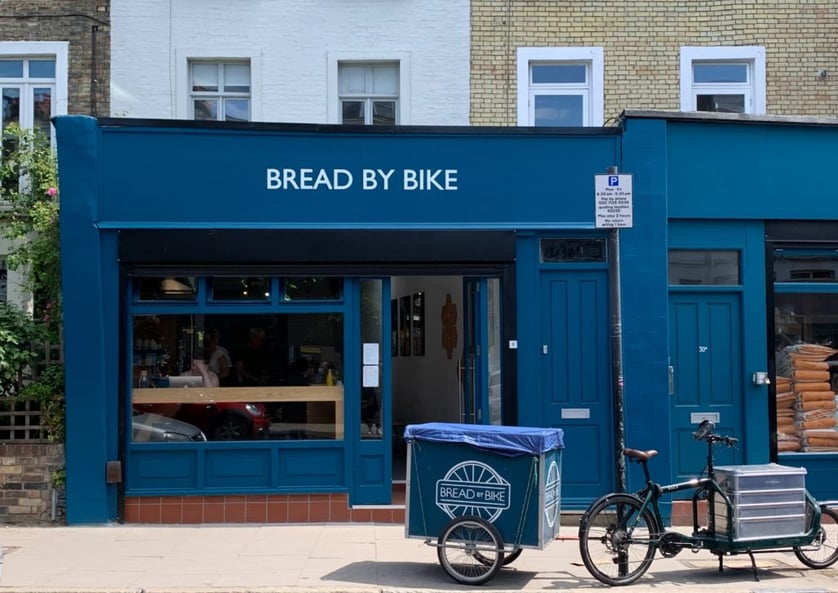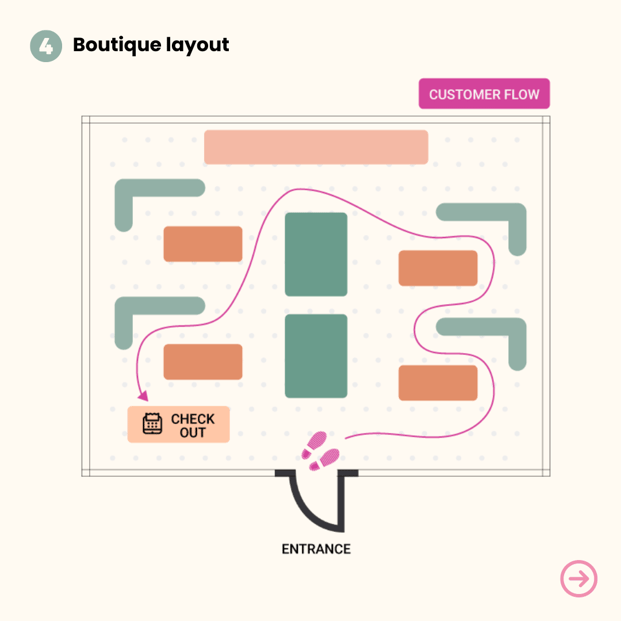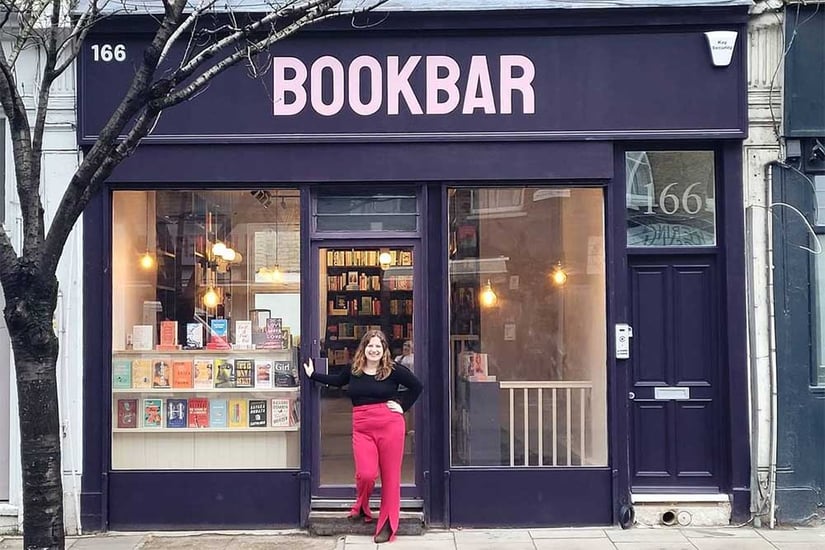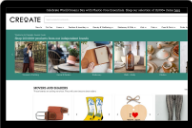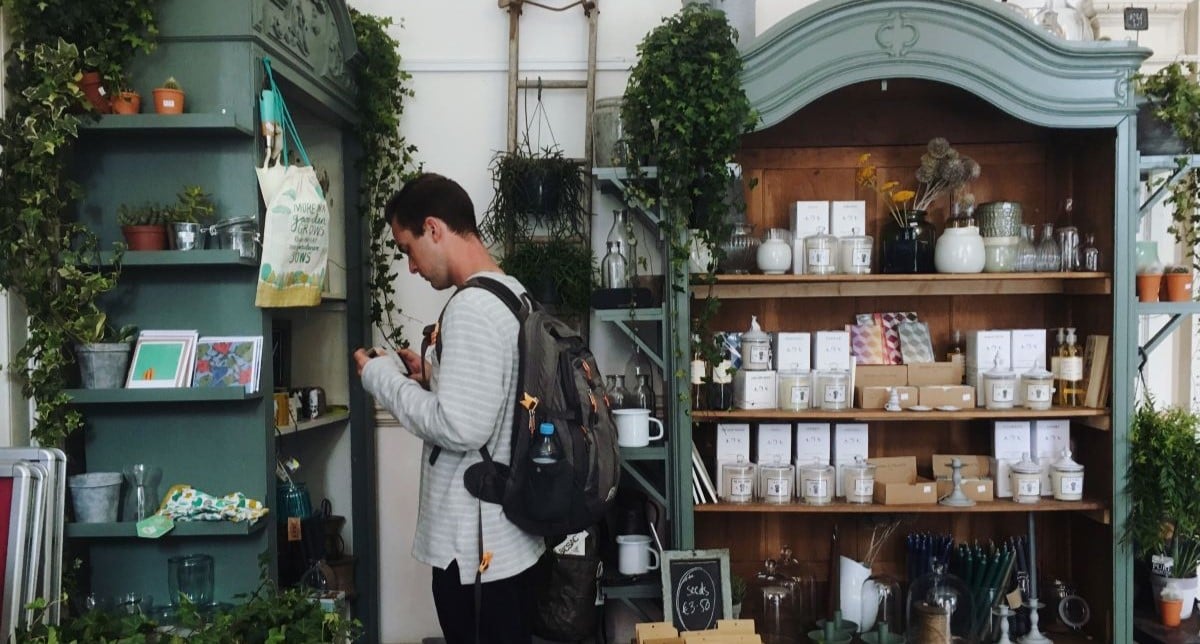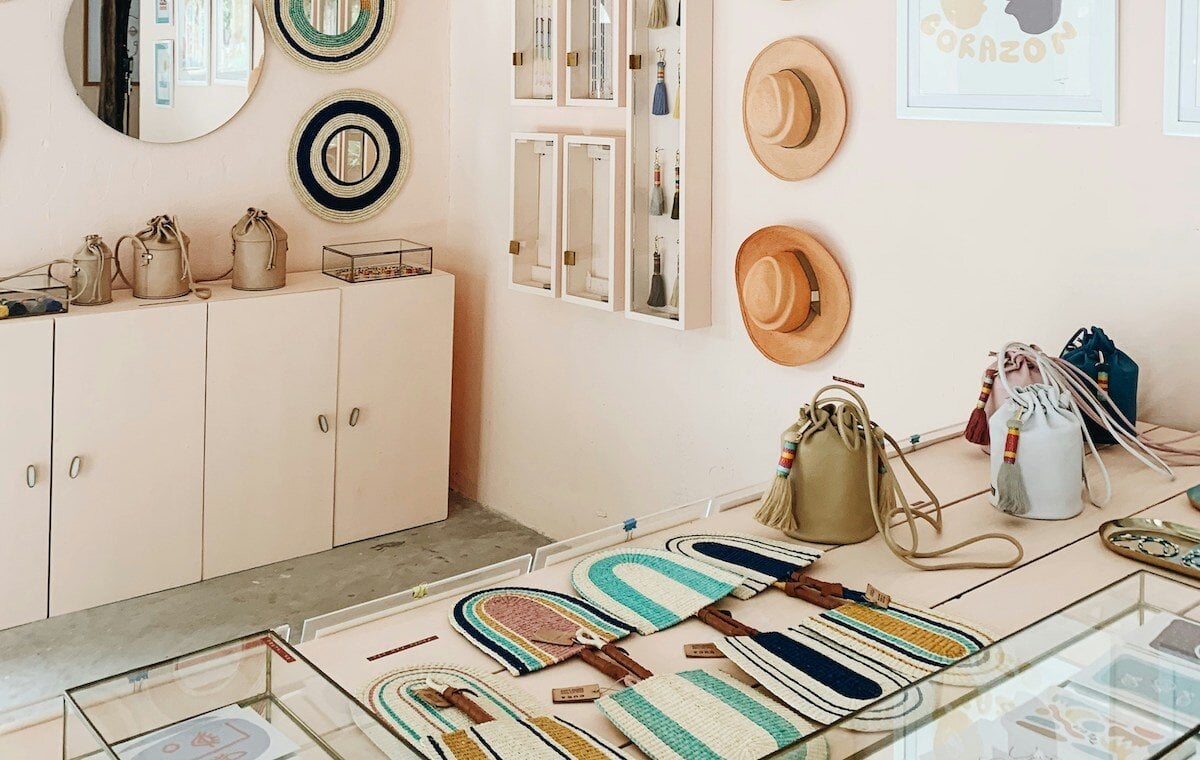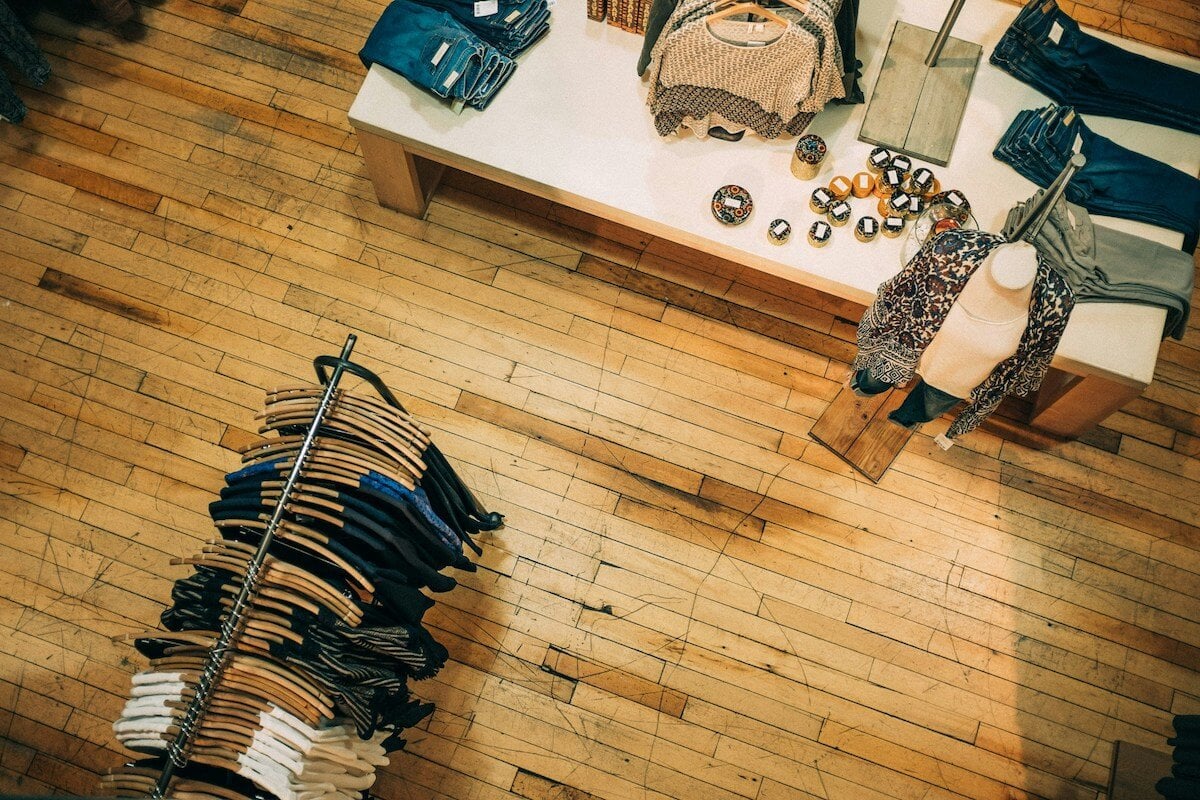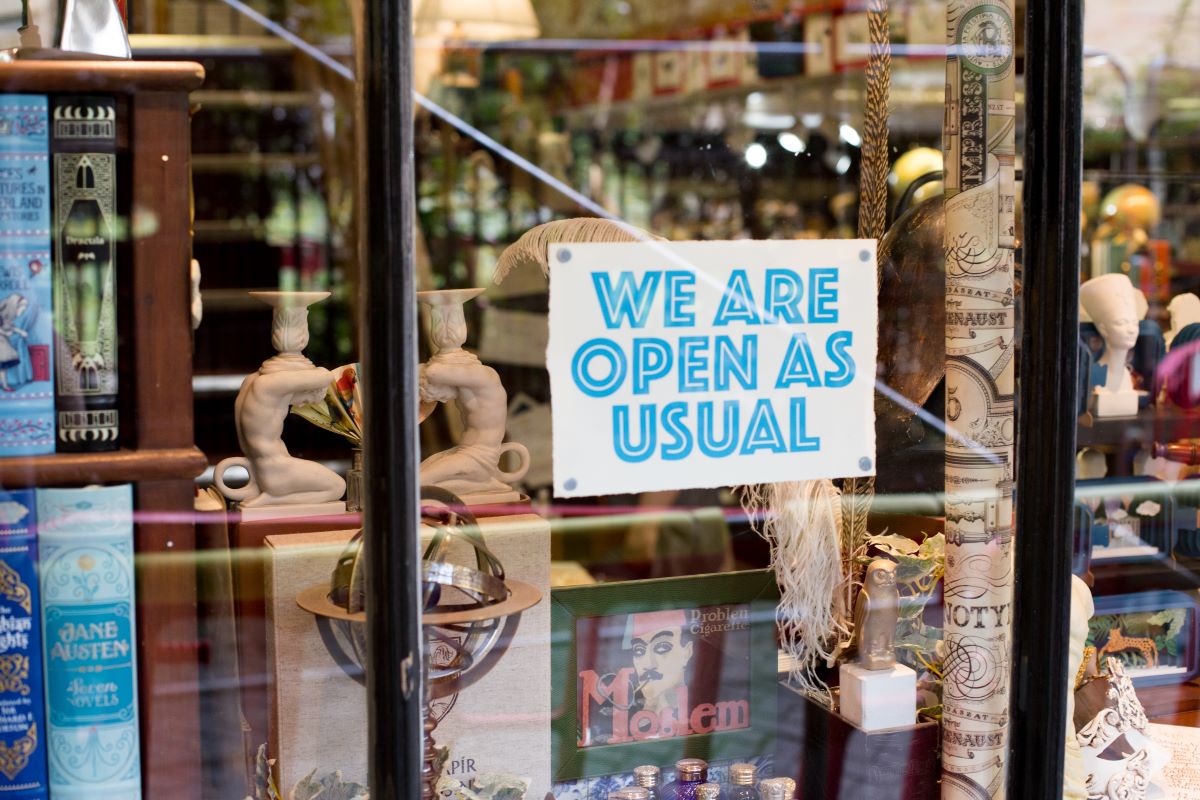
Setting up a shop isn’t easy, especially in such a challenging economic climate. Running a shop profitably? Even less so.
But don’t worry — we’re going to break down the long and short of how to open a shop in the UK, with advice from the people who’ve successfully started a retail business before. By the end, you’ll have a better idea of whether opening a brick and mortar store is for you, whether your idea has legs, and how you go about making it a reality if it does.
How to open a shop in the UK:
- Create a business plan
- Explore options for sourcing stock
- Decide how you'll finance your retail business
- Find and sign for a retail premises
- Renovate and purchase equipment, insurance, etc
- Hire staff
- Start building a buzz with marketing early on
Of course, this list is a very top level look at the process as a whole. Use the links above to jump to the relevant sections for a much more detailed breakdown of each step.
Creating a business plan
“Physical retail has gone through an undeniable shift. A lot of brands and retailers have shut down, but these were mainly retailers that were already struggling, had not innovated, and weren’t offering a unique customer experience. If the store isn’t fresh, new and exciting, customers know they can easily buy the products online, so those retailers suffer.” — Wizz Selvey, WIZZ & Co.

📍 Stems Wilder, London, UK. Remember, every independent business you love once started with a dream — and a plan!
Your business plan is a document that explains what your business is, and how it will make money. You can write it in a simple word doc, or design it up into a PDF with a free template from Canva. Even if you’re funding your retail business yourself, a business plan will help you hash out the details of your shop, and help clarify your vision and your USP.
Accountants and financial advisors can help you produce a business plan, but trying this process yourself will help you understand if your business idea is the right one, in the right place, and at the right time.
What do I need to include in my retail business plan?
Here’s a quick overview of what you should include in your retail business plan:
- A description/overview of your business. What’s the vision?
- Market research. Why here, why now?
- Your profile. Why you?
- Marketing plans. Your brand & your marketing channels
- Competitor SWOT analysis. How do your strengths & weaknesses compare to those of your competitors? Also — who are your competitors?
- Cost. How much will your shop cost to open and run?
- Financial projections. A breakdown of what revenue you expect, when you expect to break even, and how your revenue will grow over the next few years.
- Growth plans. How do you see the business evolving over the next 5 years?
Tips on making your business plan effective
If you are going to be sharing your business plan with potential investors or financial partners…
- Keep it clear and concise. This isn’t the place to house every thought and dream you’ve ever had about your business!
- Make it visual. Include graphs, diagrams and images where possible to help bring your ideas to life. Use heading to break things up, and avoid long paragraphs of text. These Canva templates make a great starting point, but don’t forget to bring it ‘on brand’ with your own colours & fonts.
- Get crystal clear on your numbers. After all, this is probably the part that’s the most important to your financial partners. Yes, you need to make some assumptions when carrying out financial projections — but there’s plenty you can predict fairly accurately, too.
How & where to source good stock
👋 We can help with this one! CREOATE is a wholesale marketplace where you can buy stock in manageable amounts direct from independent brands. And you can send back anything that doesn’t sell in 60 days for free! Start here.
A key part of any retail business’s plan is a clear idea of what you’re going to sell; not just for your business description, but also for forecasting profits based on the prices and margins you’ll be working with.
When we interviewed Rachel, a former retail store owner, she told us this 'curation' stage is easy to underestimate:
“Obviously you have to buy so much stuff — like you can't have a shelf with one candle on it, you have to have a collection of at least five candles or you know a collection of books rather than one book. So I definitely hadn't really considered that and I hadn't considered the upfront cost of all of that because you can't start with an empty physical shop”, Rachel explained, when we asked what had surprised her about the process of opening a shop.
“Online is very different. You can have things running low, but a physical shop needs to look good and needs to be full and abundant and people need to come in and feel like wanting to buy. So that was definitely a learning curve.”
📚 Bookmark for later: How to Curate an Assortment
If you sell only your own products, feel free to skip over this part. But if you’re looking to source products wholesale from other brands, here are a few ways to go about doing this.
1. Wholesale marketplaces (like us 👋)
Wholesale marketplaces give independent retailers a platform to buy stock directly from independent brands. Lower minimum order values (£75+) and faster lead times (from 2 days) make these a speedier and altogether easier option than traditional wholesale and distributor models.
As well as providing more choice, faster shipping, and more reasonable minimum order values, wholesale marketplaces typically offer other features to make independent retailers’ lives easier; from free 60-day returns on unsold stock, to free shipping, and interest-free finance options for smoother cash flow.
📚 Find out more: Top 8 wholesale marketplaces: Which is right for you?
2. Trade shows
Trade shows remain a popular (albeit less convenient) way to build relationships with brands selling wholesale.
Typically grouped by theme (e.g. homeware) trade shows bring hundreds of exhibiting brands together in one place for a day or more, so you can meet the brand owners in person, and handle the products in real life, too. If you’re interested, you can place wholesale orders directly with the brand, either at the show or afterwards.
📚 Find out more: Everything you need to know about attending trade shows
3. Distributors
More established brands, or those in a more niche market or based abroad, may still work with distributors to get their products into retail spaces. You might see distributors presenting at trade shows, or pitching to you once your store is open.
4. Local sellers
Head to your local craft market to discover great sellers in your area. Once you’re open, you’ll likely be pitched to directly by them, too.
📚 Find out more: How to source products
What should you look for in a wholesale partner?
Here are a few things to look for when you take on a brand for your store:
- Reliability & good communication
- Easy access to product images & information
- A lead time that works for you
- Profitable margins
📚 Learn more: How to buy wholesale: tips for choosing the right stock
What do we mean by margin? And what’s a ‘good’ margin for you?
A product’s margin is the difference between its retail price and wholesale price. Specifically, it's how much lower the wholesale price is than the retail price.
We often hear retail shop owners say they underestimated what made a ‘good’ margin when opening their store
Here’s a rough guideline of what you should be looking for when it comes to your product margins, depending on the type of product:
| Category | Suggested margin for retailers (minimum) |
| Beauty & Wellbeing | 35 - 40% |
| Homeware & home decor | 45 - 50% |
| Kids clothing & products | 50 - 60% |
| Stationery | 45 - 55% |
| Fashion & accessories | 45 - 55% |
| Pet supplies | 30 - 40% |
| Food & drink | 30 - 40% |
Financing your shop
“I knew what I had to take each week to cover my costs, and you have to be honest about that. And there are always additional costs. From signage, to rates that were told to you wrong, you have to have a contingency.” — Harriet Rouse, Harriet & Rose
You may be choosing to self fund your shop, in which case this section is an optional read. If you do need some additional cash to bring your shop to life, you’ve got a few great options:
1. UK Government loans
An economy with plenty of thriving small businesses is a good thing. The UK Government has schemes in place to help you get yours off the ground, to help it grow, and to help it succeed.
The startup option here is designed to really help you succeed, going beyond simple financing and venturing into more of a mentoring space.
For brand new businesses: Start Up Loan
At a glance:
- Available to new UK businesses only
- Borrow £500 - £25,000
- Government-backed finance
- Repayment period of 1-5 years
- 6% interest
- Support available for writing your business plan
- Up to 12 months ‘mentorship’ included
For expanding businesses: Recovery loan
At a glance:
- Businesses already operating and looking to expand
- Borrow £25,001- £2 million
- Provided by government-approved third parties, but the UK Government guarantees 70% of it
- Repayment period of 3-6 years (depending on type of finance)
- Interest depends on provider and plan
The name ‘Recovery’ is a confusing leftover from pandemic support. Recovery loans are actually only available to businesses that are ‘viable’ and ‘not in difficulty’.
2. Crowdfunding
Crowdfunding is a way of raising money for your new project or business from multiple people investing a small amount of money. In exchange, you can pledge a reward for your ‘backers’ to deliver once the business comes to life.
It’s a sad truth that many crowdfunding projects never hit their targets, and in the case of most crowdfunding platforms (like Kickstarter), if you don’t hit your target, you get none of the pledged money — the reason being you need the full amount to bring the project to fruition, and it’s unfair to take money from backers if this isn’t going to be the case.
But when crowdfunding works well, it can work incredibly well, building you a network of invested locals (emotionally invested that is, not legally) who love what you do, and are more likely to show up at — and shout about — your business.
|
|
Read the fine print
When you take on any financial support, always be sure to read the full terms and conditions (preferably twice!), ask questions, and seek professional advice if you need it.
📚 Learn more: How to finance your retail business: 5 options to consider
Finding your retail premises
“Try to get your lease on a short-term basis before committing longer than 3 months. Relevant traffic for shopping is very different to footfall in general, so don’t jump into a lease just because the high street looks busy.” — Fahad Khan, Co-Founder of CREOATE
You may already have the perfect premises in mind. But if you need to search for one, sites like Zoopla and Rightmove both list commercial property to rent.
Understanding commercial property terms
Finding commercial listings is easy. Understanding them? Less so...
Here are the terms for a commercial property we found in Zone 2, North London (actually on the very same street as Bread By Bike, which we covered above!).
We’ve done a full breakdown of what each of these terms means for you in our guide to finding a retail space.
But the key thing to note here is that commercial rent may seem cheaper than you expected at first glance, but comes with extra costs to factor in.
Cost breakdown of a retail space
As you might expect, the cost of your retail space is dependent on a huge number of factors; size, location, and market conditions being three of them.
Here’s an approximate breakdown of how much the commercial property example above actually costs:
Approximate upfront costs:
Premium: £60,000 to take over the lease from the existing leaseholder
Deposit: £4,000 minimum (refundable at the end of your contract)
Legal fees: £2,000
Stamp duty: £0 (annual rent + premium is under £150,000)
Refurbishing costs: Depends on requirements
Ongoing monthly costs:
Business rates: £634
Rent: £1,333 (but here this is subject to a review every 4 years)
Commercial rent averages across the UK
London, unsurprisingly, has the highest commercial rent per square metre of any UK city.
Statista reviewed the average annual rent paid per square foot in ‘prime high street retail’ spaces in other major cities around the UK at the end of 2022. When we apply this to a small(ish) shop size of 500 sq feet, this is how the average monthly shop rent looks per city:
| Location (prime retail space) | Average monthly rent |
| London West end - Bond Street | £83,333 |
| London West end - Oxford Street | £27,083 |
| London city | £10,000 |
| Manchester | £9,167 |
| Cardiff | £7,500 |
| Birmingham | £5,625 |
| Leeds | £5,417 |
| Bristol | £3,542 |
That said, keep in mind that this is for prime, city centre retail space. As soon as you move a little further out, things get a lot more affordable.
Class of use explained
Something to look out for from the get-go is ‘class of use’, which shows what business type the property currently can and can’t be used for. While it is possible to have this class changed, it’s easier to find one that already suits your needs.
A class of A1 means the property can be used for: shops, retail warehouses, hairdressers, travel and ticket agencies, post offices, pet shops, sandwich bars, showrooms, domestic hire shops, dry cleaners, funeral directors.
For anywhere selling food and drink for consumption on site (e.g. a coffee shop), you’re looking for class A3.
📚 Find out more: Our guide to finding a retail space [including costs]
Renovating your retail space
It’s hard to go into too much detail on the process of fitting out & prepping a shop here just because we know the requirements are so different for each business, and also depends on the situation you’re moving into.
It’s worth getting quotes as soon as you can though because — like most building work — it’s likely to cost more than you think.
To cut down on this cost, think about which less specialised tasks you’re able to pick up yourself, or with a team of friends or family. We love this shop glow up at @laurenastondesigns, and how the team have handled the floor prep themselves.
Try a soft launch: how to open a pop up
“In the run up to Christmas 2020 I organised a ‘Small Business Pop up’ and knew that when I could talk to my customers about what they were buying, I sold more… and so the decision [to find a permanent retail space] sort of made itself.” — Harriet Rouse, Harriet & Rose
If all the information above has you feeling a little intimidated, we don’t blame you. Finding a retail space can be a costly and lengthy process, which is why ‘soft launching’ with a pop up space is becoming an increasingly popular option — especially if you already have an ecommerce store up and running.
Sites like Appear Here, We Are Pop Up and Popable make it easy to book retail spaces by the day, much like you’d book an Airbnb for your holiday.
For comparison, we had a look for pop-up spaces in a similar area to the retail listing we unpacked above, and found spaces going for between £250 and £350 per day. Looking across the UK as a whole, prices were really varied — between £50 and £3,000+ per day.
📚 Find out more: How to set up a pop up shop
What you need to open your store
Besides stock and a physical premises, you may now be wondering: what do I need to open a shop? Here’s a quick look at the main essentials:
Equipment
1. A POS system
POS stands for Point of Sale. At a base level, a POS system allows you to take payments by card. Ideally, it will also track stock levels, and automatically update these across your ecommerce store (if you have one).
Depending on which POS system you go for, there’ll be an upfront cost for equipment (about £0 - £1,000, one time payment), and an ongoing monthly fee for the service (£20 - £100 per month).
Shop around to find the right one for your needs (do you want the ability to take cash? Do you have an ecommerce store already, and so does your POS need to sync with this?).
Generally speaking we’ve noticed Square seems a popular option among newer independent shops, and has really nice, sleek hardware.
2. A floorplan, fixtures & fittings
Start thinking about how your shop layout will look long before you even open, and take steps to order and fit anything you need to bring it to life (e.g. shelves, freestanding displays, till area, fitting rooms).
Choosing a floor layout is part art and part science, with proven ‘templates’ you can use as a starting point.
Our personal favourite is the boutique layout. It works in small spaces, draws people in, and leaves plenty of scope to switch things around in the future.
📚 Find out more: 13 Shop floor layouts & customer flow tips
3. Props & decoration
A-boards, mannequins, dried flowers… start thinking about how you’ll present your products, and any decorations you want to add. It may feel too early to start thinking about this, but in our experience, nailing those last minute details can be hard! So for now, have fun, and start gathering inspiration (and collating those all-important Pinterest boards, of course).
4. Cleaning products & equipment
You think your house gets dusty quickly? You wait until you have a shop! Make sure you have basic cleaning supplies in from day one, including a hoover — it’s likely you’ll need to do at least some cleaning in your shop every day (or of course, you can outsource this).
5. Security
Again, this isn’t one we’re going to go into huge detail on because it’s so specific to your building and its needs, but we’re just including it here so you don’t forget about it. Consider a complete system with alarms and cameras, as well as other measures like a shutter. You can get complete systems installed professionally, and they can normally carry out a risk assessment at this time to help identify threats you may have missed.
6. Signage
Alongside a great window display (which is easy to change), it’s so important to love the way your shopfront looks, and to use it smartly to attract footfall.
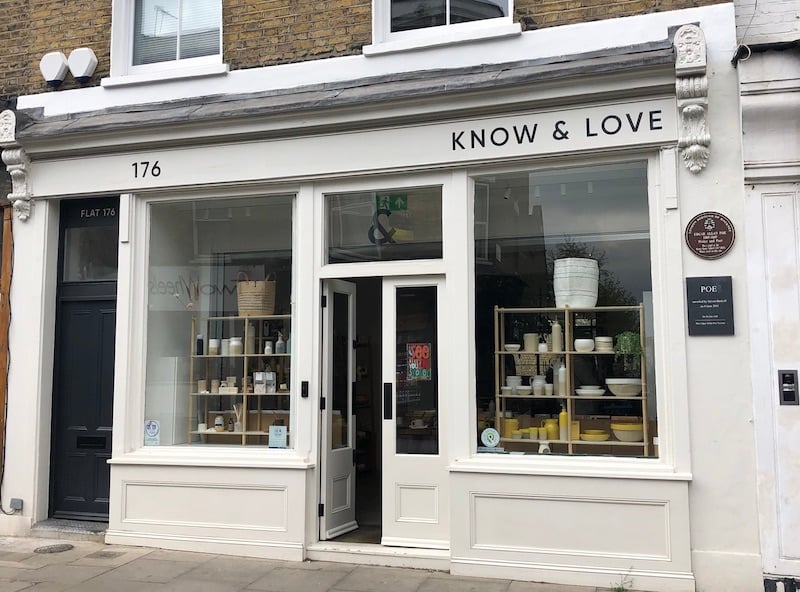
📍 Know & Love, London, UK. Check out some of our favourite shopfront and shop signage ideas for more inspiration
Services & licences
1. Shop insurance
Shop insurance, also known as ‘retail insurance’ is a term for the package of different types of insurance you’ll either legally require, or be recommended, for your shop.
The eight types of shop insurance are:
- Employers’ liability insurance
- Shop premise or building insurance
- Business interruption insurance
- Stock/equipment/contents insurance
- Public liability insurance
- Product liability insurance
- Professional indemnity insurance
- Personal accident insurance
We have a guide breaking down all the types of shop insurance listed above, but it’s not absolutely necessary to understand what each one means, it’s just (as always) important to read over the terms of any contract you enter into to make sure everything you expect is covered. And — something people are generally less good at remembering — don’t forget to update your cover if your business changes, like if you purchase expensive new equipment, or start serving food or drink.
It’s easy to get a quote for a shop insurance package specific to your needs by using a comparison website such as Compare the Market. And while this quote is obviously very specific to your business and its location, you can expect shop insurance for a small shop or coffee shop to be around £400 to £550 a year.
2. Registering your company, PAYE & Corporation Tax
To run any business in the UK, you need to register it with Companies House. Setting up a Limited Company costs just £12 if you do it online, is pretty quick to complete, and means your business is registered within 24 hours.
It probably makes sense to register for Corporation Tax and PAYE at the same time. You legally have to register for Corporation Tax within 3 months of setting up a Limited Company, and PAYE enables you to pay people. If you don’t plan to hire people straight away, you can skip this one for now.
3. Extra licences
Use the UK government Licence Finder to see if you need any extra licences for your business. For example, here we selected ‘Stationery retail’ and ‘Home furnishings retail’ under activity/business.
Based on this information, here are some activities that might mean our fictitious homeware and stationery shop would require an extra licence:
4. Accounting software
Make it easier to keep track of what you have coming in and going out with retail accounting software. A good one will sync with your POS, saving you time transferring information between different systems.
Hiring staff: process & costs
“I’d also suggest hiring as soon as you can. I know it goes against advice, but it gives you room to drive the business forward.” — Harriet Rouse, Harriet & Rose
Before hiring
Before you hire an employee, make sure you:
- Can afford to take on employees
- Know which type of employee you need (probably part time)
- Make your workplace safe and accessible
- Register as an employer
- Get employers’ liability insurance (if not already included in your package)
- Set up PAYE
Cost of employing someone
How much should you budget for staff costs? From April 2024, minimum wage across the UK is as follows (per hour):
| Age 21 and over | £11.44 |
| Age 18 - 20 | £8.60 |
| Under 18 | £6.40 |
The London Living Wage is set to £13.15 per hour. This is not a legal pay requirement, but is a suggested minimum based on what’s required to get by in the UK capital, where the cost of living is higher.
When recruiting someone
You’re likely to find that just putting up a sign in your window gets you enough local applicants for your role, but you can also share across your social media and consider posting on a job board if things are slow.
Once you have found someone you want to employ, you need to:
- Check they have the right to work in the UK
- Find out if they need a DBS check
- Check whether they need to be entered into a workplace pension
- Agree a contract and salary
- Tell HMRC about your new employee
Marketing your shop: how to get people through the door
Don’t rely on footfall alone! Making a good marketing plan, and committing to seeing it through, is essential for driving people to your store. And it doesn’t need to wait for opening day, either…
Build a buzz before you open
Don’t wait until your shop is opening to start your social media profiles! You might not even need to wait until your shop’s in progress…
|
|
📚 Bookmark for later: 11 Ways to get more people into your store
Show up on social media
“Getting in front of the camera really helps our followers feel more connected with the shop and it’s an easy way for small businesses to set themselves apart from the big brands.” — Fran, BAM Store + Space
There’s a lot of advice floating around about how to manage your social media accounts; how often to post, what to post, how to grow….
For a small retail business, we think the best advice you can keep in mind is: show up.
That means yes, try to post consistently — but it also means posting authentically (the good, the bad, the behind-the-scenes), and posting pictures of yourself (and the rest of the team!).
|
Image credit: BAM Store + Space A closer look: How the BAM team show up on socials, with great successBAM Store + Space is an independent gift shop and space in Bristol with over 10,000 engaged Instagram followers. BAM’s feed is as vibrant and cheerful as the store itself. But if we dig deeper into its success, you can see that the posts which feature members of the BAM team always get more engagement. And that’s no coincidence, as owner Fran explains: “Getting in front of the camera really helps our followers feel more connected with the shop and it’s an easy way for small businesses to set themselves apart from the big brands. If I want to say thank you to our customers (after a busy lockdown or Christmas for example) I use a photo of myself so it feels like it’s actually coming from a human. It can feel really awkward posting images of myself so I tend to diffuse that by being playful with it and a bit silly. I also post images of my staff so people get to know the whole team, too. Be brave… your customers will love it!” |
📚 Read more: 6 Small business Instagram tips [with examples]
Make yourself a website
Even if you aren’t planning on selling through your website, it’s kind of expected in this day and age that most small businesses will have at least a basic one.
‘Website builders’ are platforms that let you build your own website from a template. They’re designed to be usable even for people who don’t consider themselves to be very technically minded, or creative. Allow around £10-20 per month for a basic website.
💡Top tip: Does another business have a website you love? See which platform it’s built on by searching it with the Built With tool.
There are lots of detailed expert comparisons of website builders out there depending on your budget, and any specific needs you have.
But in the interest of saving you time, when it comes to building a sleek online presence simply, you can’t go wrong with Squarespace. It’s not quite the cheapest, but it’s only a few pounds more per month than cheaper options.
💡Top tip: While you can use a free auto-generated domain name with your website builder (something like myshop.squarespace.com), we always recommend getting your own custom domain name to look more professional (myshop.com). You can normally buy this through your website builder, but it’s almost always cheaper to get this from a domain name provider (like Namecheap) and link the two up, which is a simple process.
However, while Squarespace is suitable for selling a few products through your site (up to ~20), if you plan to give the ecommerce side of your business a real go, we recommend going for an ecommerce platform instead, as this is a more scalable option for selling. Shopify is the most popular option.
Set up a Google Business Profile
To make sure people can find your business on Google Maps, see your key business info (like opening hours) at a glance, and also leave reviews, make sure you set up your Google Business Profile.
Nail your merchandising & window display

📍Lift store, Southwold, UK. A masterclass in fun, tactile merchandising
To capitalise on foot traffic, you want your store to be two things: eye-catching and inviting. We’ve already spoken about the part your storefront and shop floor layout plays in this, but there are other known merchandising tips to make your store appealing and fun to browse.
And of course, your window display is going to be doing a lot of the heavy lifting. Practice makes perfect when it comes to building a great display, but check out our guide for some inspiration and tips from the pros. Finally, make sure you update it on a regular basis to keep it interesting to people passing by often. When we interviewed visual merchandising consultant Sarah Manning, she recommended updating your window once a month as a minimum.
📚 Bookmark for later: 16 Tried-and-tested retail merchandising tips
📚 Bookmark for later: How to build a great retail window display
Explore events & collaborations
"Keep at it. It takes time for people to get to know you. I would say eye-catching marketing is alway helpful, especially social media. Also, get involved with exciting local and out of town events – this is a great way to get yourself out there and chatting to others." — Lauren, mlkwood store
One thing lots of our favourite independent shops have in common? They’re all going beyond being shops; offering something different, running events and workshops, serving coffee, collaborating with other businesses in the area…
Start thinking about how you can squeeze the most value out of your space, expand into other revenue streams, or link up with other businesses on your street.
📚 Bookmark for later: 7 Shops going beyond traditional retail
How to open a shop: closing thoughts & advice
“However hard you think you’ll work, it’ll be harder. I have been in the shop six days a week since I opened. It’s my name above the door, and whilst I get it all running smoothly, I need to be here all the time. There is no work life balance, it’s all work!” — Harriet Rouse, Harriet & Rose
Opening a shop is expensive and hard work; there are no two ways about that.
But when things go well, the sense of achievement and satisfaction is immense. To look around your store and see people having a good time, and browsing products you’ve chosen… it’s that feeling that keeps people opening shops, even when it’s hard. And we’re glad, because independent retail enriches our high streets like little else.
“It can feel far out of reach to dream up something and bring it to life, but if four friends who opened a mobile plant shop as a way to do something fun on the weekends and make some beer money can do it.. you can too.” — Carlie, Bros with Hoes Plant Co.
FAQs
How much does it cost to open a shop?
It's so hard to put a specific number on this. As you will have seen from the information above, the upfront cost of a shop can very so much depending on the size and location of the store alone - if ever there were a time for us to pull out the 'how long is a piece of string' line, this is it! That said, we have taken on the task of estimating the costs involved in the guide below. We'd also recommend looking out for other retailers who very generously share their costs transparently, like Lisbon's Salted Books.
📚 Find out more: How much does it cost to open a retail store? Key costs to factor in (& where to save)
Who can open a shop in the UK?
In theory, pretty much anyone can open a shop in the UK. However, having some relevant experience is of course an advantage (and this will also make you a more attractive prospect for retail financing options, if you choose to go down this route). This doesn't have to be working in a retail store (although again, this is helpful experience) — if you're opening a bookshop, for example, a background in publishing would be a huge asset.
What do I need to consider before opening a shop?
Besides all of the logistical elements we've covered in detail above, take some time to figure out if opening a shop is what you really want. Are you prepared to open up every day, and work a full day there at least six days a week? Can you manage a physical job where you'll be on your feet and moving boxes around for a large portion of your day?
If it's your dream then go for it, of course! It's just not the best business to start on a whim, or if you're not 100% sold.


